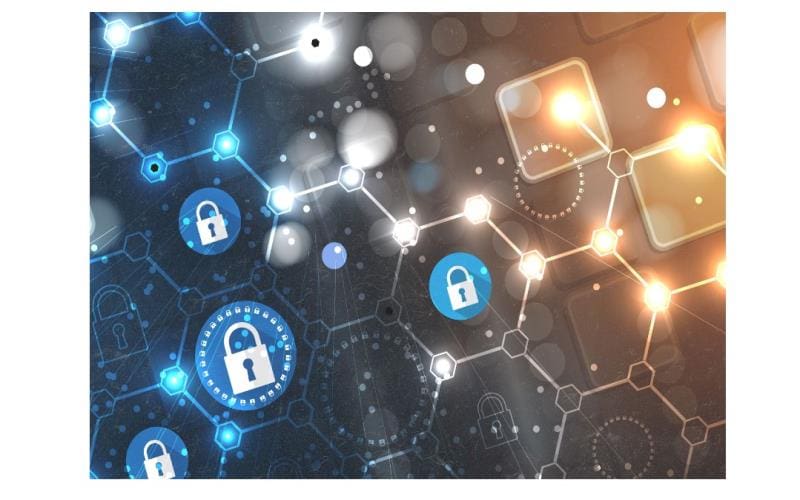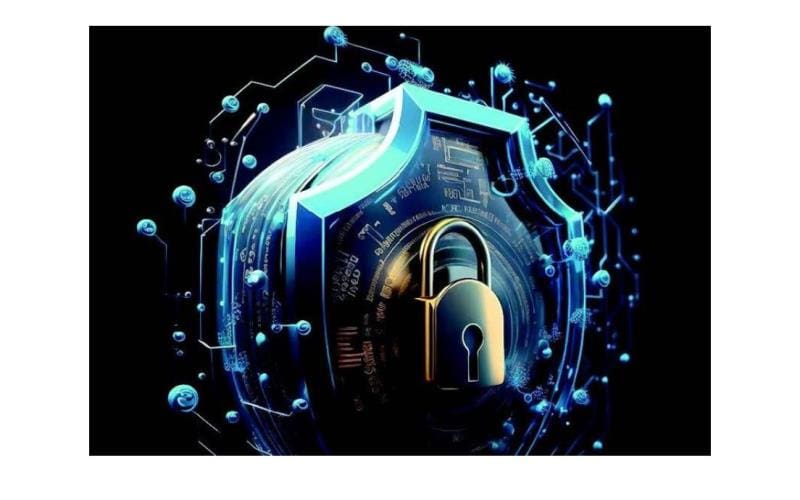I. Introduction
In the ever-evolving landscape of the digital age, technology has become an inseparable part of our daily lives, influencing the way we communicate, work, and entertain ourselves. The proliferation of gadgets, smart devices, and interconnected systems has ushered in an era where technology is not just a convenience but a fundamental aspect of our existence. Security awareness training can help individuals and organizations understand the risks and threats of the online world and learn how to protect themselves. Check out this link jealouscomputers.com for more information on the importance of security awareness training.
A. Growing Importance of Cybersecurity in the Gadget Era
As our reliance on technology intensifies, so does the significance of cybersecurity. The gadget era, marked by the omnipresence of smartphones, smart homes, and interconnected devices, has given rise to a digital ecosystem that demands robust protection. With each device interconnected through intricate networks, the vulnerability to cyber threats has escalated, necessitating a paradigm shift in our approach to security.
In this era, where personal and professional facets of life are seamlessly interwoven with technology, the ramifications of a cybersecurity breach extend far beyond the digital realm. From financial data to personal communications, the stakes are higher than ever, emphasizing the critical need for comprehensive cybersecurity measures.
B. The Need for Cybersecurity Awareness
- Lack of Awareness Among the General Population
Despite the escalating cyber threats, a significant portion of the general population remains blissfully unaware of the risks and consequences associated with inadequate cybersecurity measures. Common misconceptions about the invincibility of personal data and ignorance regarding potential cyber threats create a breeding ground for vulnerabilities. This widespread ignorance poses a formidable challenge in the battle against cyber threats, as individuals become unwitting targets due to their lack of awareness and preparedness.
- The Role of Education in Promoting Awareness
To address the pervasive lack of security awareness, education emerges as a powerful tool in fostering a culture of digital resilience. Integrating cybersecurity education into the curriculum of schools and universities is pivotal in instilling the necessary knowledge and skills from an early age. Training programs tailored to the specific needs of each organization not only enhance the overall security posture but also create a workforce that is vigilant and proactive in safeguarding sensitive information.
II. Cybersecurity Threats in the Gadget Era
In the fast-paced digital landscape of the gadget era, the convenience of interconnected devices comes hand in hand with an escalating array of cybersecurity threats.
A. Phishing Attacks and Social Engineering
Among the myriad of cyber threats, phishing attacks and social engineering tactics stand out as insidious methods employed by cybercriminals. Phishing involves the use of deceptive emails, messages, or websites to trick individuals into revealing sensitive information, such as login credentials or financial details. In the gadget era, where communication is predominantly digital, the prevalence of phishing attacks has surged.
Common tactics employed by cybercriminals include impersonating trusted entities, creating urgency to prompt swift action, and exploiting human emotions. These tactics often prey on the unsuspecting nature of users, leveraging psychological manipulation to breach security defenses.
B. The Role of User Awareness in Preventing Phishing
Crucially, user awareness plays a pivotal role in preventing phishing attacks. Educating individuals about the red flags of phishing emails, such as unexpected attachments, dubious links, or requests for sensitive information, empowers users to discern between legitimate communication and potential threats.
Implementing cybersecurity training programs, both in educational institutions and workplaces, can significantly enhance user awareness. Simulated phishing exercises and real-world examples equip individuals with the skills to identify and thwart phishing attempts, contributing to a collective shield against cyber threats.
- Malware and Malicious Software
Malware, a portmanteau of “malicious software,” constitutes a broad category of digital threats that can compromise the functionality and security of gadgets. In the gadget era, where smartphones, tablets, and smart devices proliferate, various types of malware pose significant risks.
- Types of Malware Affecting Gadgets
Viruses: These malicious programs attach themselves to legitimate files and spread when the infected files are shared.
Trojans: Disguised as legitimate software, Trojans deceive users into installing them, allowing unauthorized access to the device.
Ransomware: This type of malware encrypts files, rendering them inaccessible until a ransom is paid to the attacker.
Spyware: Designed to covertly observe and gather user information, spyware compromises privacy and security.
III. Importance of Antivirus Software and Regular Updates
Regular updates to antivirus software are paramount as they ensure the application’s database is equipped to recognize the latest threats. Regularly updating devices is a proactive measure that bolsters security and guards against evolving cyber threats.
A. The Role of Businesses and Organizations in Cybersecurity
In the dynamic landscape of the digital age, businesses and organizations find themselves at the forefront of the ongoing battle against cybersecurity threats. As the gadget era continues to evolve, the imperative for robust cybersecurity measures becomes not only a necessity but a strategic imperative for safeguarding sensitive data and maintaining operational integrity.
- Cybersecurity Training for Employees
The first line of defense for any organization lies in its employees. Recognizing the critical role that human behavior plays in cybersecurity, businesses and organizations are increasingly prioritizing comprehensive cybersecurity training for their staff.
The digital ecosystem is rife with ever-evolving cyber threats, and employees, often unwittingly, can become conduits for potential breaches. From phishing attempts to social engineering tactics, the spectrum of threats is vast and continually expanding. Educating staff about the nature of these threats, the importance of vigilance, and the role they play in maintaining a secure digital environment is paramount.
- Implementing Regular Training Sessions and Simulations
Cybersecurity education is an ongoing process. Regular training sessions, workshops, and simulated cyber attack scenarios are instrumental in keeping employees abreast of the latest threats and best practices. Simulations allow employees to experience real-world scenarios in a controlled environment, honing their ability to respond effectively and mitigating the risks of falling victim to cyber threats.
By fostering a culture of security awareness, organizations not only fortify their defenses but also cultivate a workforce that is proactive in identifying and reporting potential security risks.
B. Investing in Cybersecurity Infrastructure
Beyond employee education, the foundation of a robust cybersecurity strategy for businesses and organizations lies in the investment in cutting-edge infrastructure and technologies.
- Upgrading Security Systems and Software
As cyber threats become increasingly sophisticated, outdated security systems and software are akin to leaving the front door open to attackers. Regularly upgrading security infrastructure is crucial in adapting to the evolving threat landscape. Modernizing software and systems is not merely a technological upgrade but a strategic investment in the overall resilience of the organization. The cost of a cybersecurity breach, both in financial and reputational terms, far outweighs the investment required to maintain state-of-the-art security measures.
- Collaborating with Cybersecurity Experts for Risk Assessments
In the ever-changing landscape of cyber threats, organizations often benefit from external expertise. Leveraging managed IT services with cybersecurity experts for regular risk assessments provides an objective evaluation of the organization’s vulnerabilities and potential points of exploitation. Moreover, engaging with cybersecurity professionals and incorporating IT services ensures that the organization stays ahead of emerging threats and adopts best practices in line with industry standards. This comprehensive approach not only enhances security measures but also establishes a robust framework for ongoing protection.

IV. Conclusion
In traversing the gadget era, where our daily lives are intricately intertwined with technology, the paramount importance of cybersecurity awareness cannot be overstated. As our reliance on interconnected devices and digital platforms intensifies, so does the urgency for robust measures to fortify against the ever-evolving landscape of cyber threats. To ensure the safety and security of your personal information, it is crucial to stay informed and take proactive steps to protect yourself online.To learn more about the resource for staying up-to-date on the latest cybersecurity news and tactics, click here.
Frequently Asked Questions (FAQ)
Q: Why is security awareness crucial in the gadget era?
A: Security awareness is vital as the integration of smart devices increases vulnerability to cyber threats. Understanding potential risks and adopting preventive measures is essential for personal and collective security.
Q: What are the common cybersecurity threats in the gadget era?
A: Common threats include phishing attacks, malware, and insecure Wi-Fi networks. Awareness empowers individuals to recognize and protect against these threats, safeguarding their personal and sensitive information.
Q: How can individuals contribute to cybersecurity in their daily lives?
A: Individuals play a pivotal role by adopting secure practices such as creating strong passwords, using multi-factor authentication, and staying informed about the latest cybersecurity threats. Personal responsibility is key to building a resilient digital environment.
Q: What role do businesses and organizations play in security awareness?
A: Businesses must invest in employee training, upgrade security infrastructure, and prioritize responsible data handling. By fostering a culture of cybersecurity, organizations contribute to a safer digital landscape for both employees and customers.
Q: Are there specific initiatives governments are taking to enhance cybersecurity?
A: Yes, governments are enacting cybersecurity laws and regulations, supporting research and development, and promoting collaboration between public and private sectors. These initiatives aim to strengthen overall cybersecurity measures on a broader scale.

